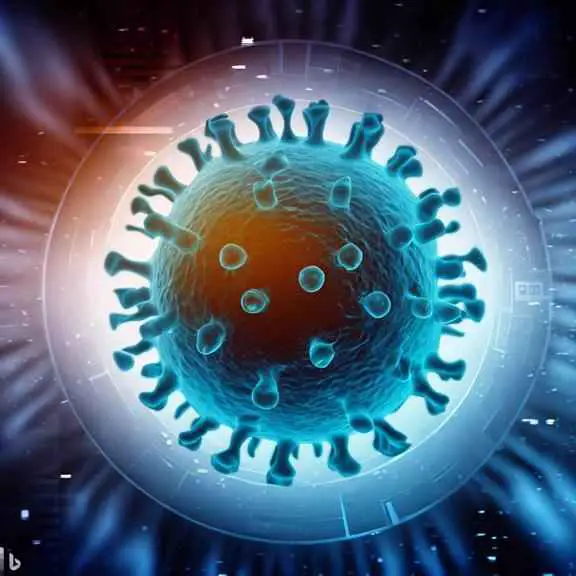Paragraph on
Coronavirus
for all Class, Words
by Health on
The coronavirus, or COVID-19, is a highly infectious respiratory illness caused by the novel coronavirus, SARS-CoV-2. Originating in Wuhan…, please continue reading.

Table of Content
Ad
The Paragraph on Coronavirus
Ad
The coronavirus, or COVID-19, is a highly infectious respiratory illness caused by the novel coronavirus, SARS-CoV-2. Originating in Wuhan, China in 2019, the virus has rapidly spread worldwide, resulting in a global pandemic. The virus primarily spreads through respiratory droplets when an infected person coughs or sneezes, but can also spread through contact with contaminated surfaces. Symptoms include fever, cough, and difficulty breathing, with more severe cases requiring hospitalization and even leading to death.
In response to the outbreak, governments across the world have implemented strict measures such as lockdowns, travel restrictions, and social distancing guidelines to slow the spread of the virus. Many businesses and schools have closed as well, leading to widespread economic disruptions and social isolation.
Despite the challenges posed by the pandemic, there have been some positive developments in the fight against the virus, including the development and distribution of effective vaccines. However, the emergence of new variants of the virus has raised concerns about the efficacy of these vaccines and the continued need for preventative measures.
Overall, the coronavirus pandemic has had a profound impact on the world, highlighting the interconnectedness of global health and the need for international cooperation in responding to crises.

Questions about Coronavirus
Ad
Questions and Answers:
- What is the coronavirus?
Answer: The coronavirus, or COVID-19, is a highly infectious respiratory illness caused by the novel coronavirus, SARS-CoV-2.
- How does the coronavirus primarily spread?
Answer: The virus primarily spreads through respiratory droplets when an infected person coughs or sneezes.
- What are the symptoms of the coronavirus?
Answer: Symptoms include fever, cough, and difficulty breathing.
- What measures have governments implemented in response to the coronavirus pandemic?
Answer: Governments have implemented strict measures such as lockdowns, travel restrictions, and social distancing guidelines to slow the spread of the virus.
- Have there been any positive developments in the fight against the virus?
Answer: Yes, there have been positive developments, including the development and distribution of effective vaccines.
- What challenges have businesses and schools faced because of the pandemic?
Answer: Many businesses and schools have closed, leading to widespread economic disruptions and social isolation.
- How has the pandemic impacted the world?
Answer: The coronavirus pandemic has had a profound impact on the world, highlighting the interconnectedness of global health and the need for international cooperation in responding to crises.
- What are some of the alternative names for the coronavirus?
Answer: COVID-19, SARS-CoV-2.
- Is the coronavirus a new virus?
Answer: Yes, it is a new virus that emerged in Wuhan, China in 2019.
- What can individuals do to help slow the spread of the virus?
Answer: Individuals can practice good hygiene, wear masks, practice social distancing, and get vaccinated when able.

Vocabulary related to Coronavirus
Ad
Vocabulary Words:
- Infectious - (adjective) likely to spread infection
Usage: The coronavirus is a highly infectious disease. Synonyms: contagious, communicable Antonyms: noninfectious, sterile
- Respiratory - (adjective) relating to breathing or the organs of respiration
Usage: The coronavirus primarily affects the respiratory system. Synonyms: pulmonary, breathing Antonyms: nonrespiratory
- Novel - (adjective) new or unusual in an interesting way
Usage: The coronavirus is a novel virus that has never been seen before. Synonyms: new, original Antonyms: familiar, common
- Pandemic - (adjective) (of a disease) prevalent over a whole country or the world
Usage: The coronavirus outbreak has become a global pandemic. Synonyms: worldwide, universal Antonyms: local, individual
- Contaminated - (adjective) made impure by exposure to or addition of a poisonous or polluting substance
Usage: Surfaces can be contaminated with the coronavirus. Synonyms: polluted, tainted Antonyms: uncontaminated, pure
- Symptom - (noun) a physical or mental feature indicating a condition or disease
Usage: Fever and cough are common symptoms of the coronavirus. Synonyms: indication, sign Antonyms: health, wellness
- Efficacy - (noun) the ability to produce a desired or intended result
Usage: The efficacy of vaccines against new strains of the coronavirus is still being studied. Synonyms: effectiveness, potency Antonyms: inefficacy, uselessness
- Lockdown - (noun) a state of isolation or restricted access instituted as a security measure
Usage: Many countries have instituted lockdowns to slow the spread of the coronavirus. Synonyms: confinement, quarantine Antonyms: freedom, liberate
- Disrupt - (verb) interrupt (an event, activity, or process) by causing a disturbance or problem
Usage: The pandemic has disrupted many businesses and schools. Synonyms: disturb, interfere Antonyms: facilitate, encourage
- Interconnectedness - (noun) the state of being connected with each other
Usage: The coronavirus pandemic has highlighted the interconnectedness of global health. Synonyms: interdependence, unity Antonyms: disconnectedness, isolation

Structure of the sample "Coronavirus" paragraph
Ad
Cohesion and coherence:
The paragraph begins with an introduction that defines the coronavirus and describes its origins and impact. The second paragraph discusses how the virus spreads, while the third paragraph focuses on symptoms and preventative measures. The fourth paragraph explains the measures governments have taken to slow the spread of the virus, while the fifth paragraph mentions positive developments in the fight against the virus. The sixth paragraph highlights the challenges posed by business and school closures, while the seventh paragraph discusses the pandemic’s global impact. This structured approach ensures cohesion and coherence in the paragraph by presenting information in a logical, easy-to-follow sequence. Additionally, key terms are defined and used consistently throughout the paragraph to enhance coherence.
